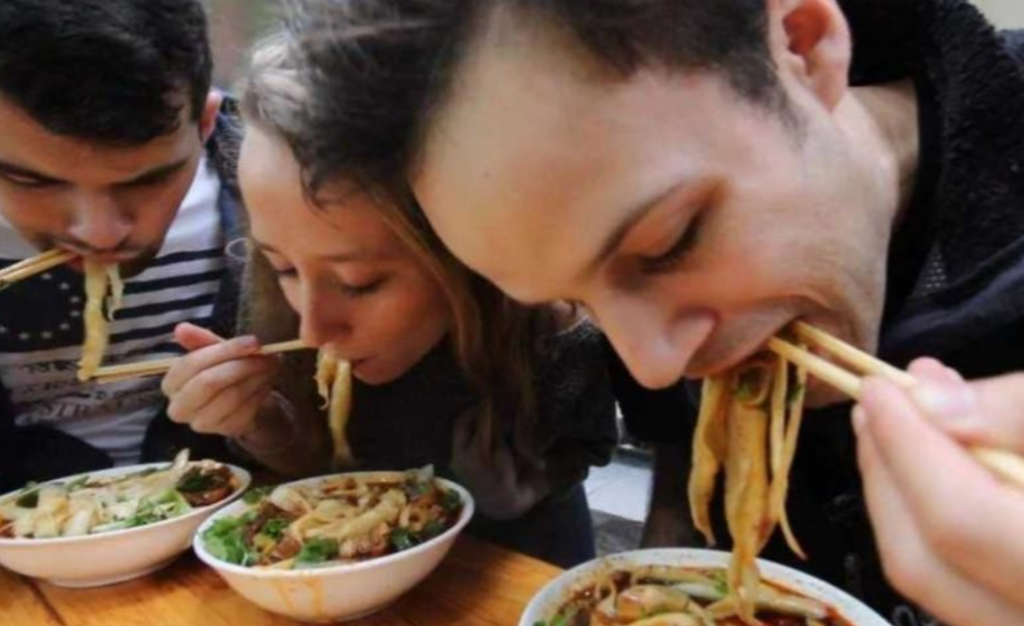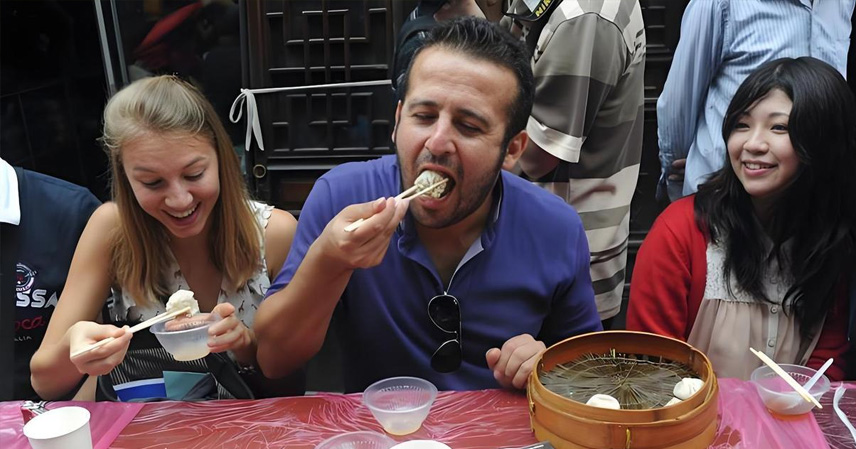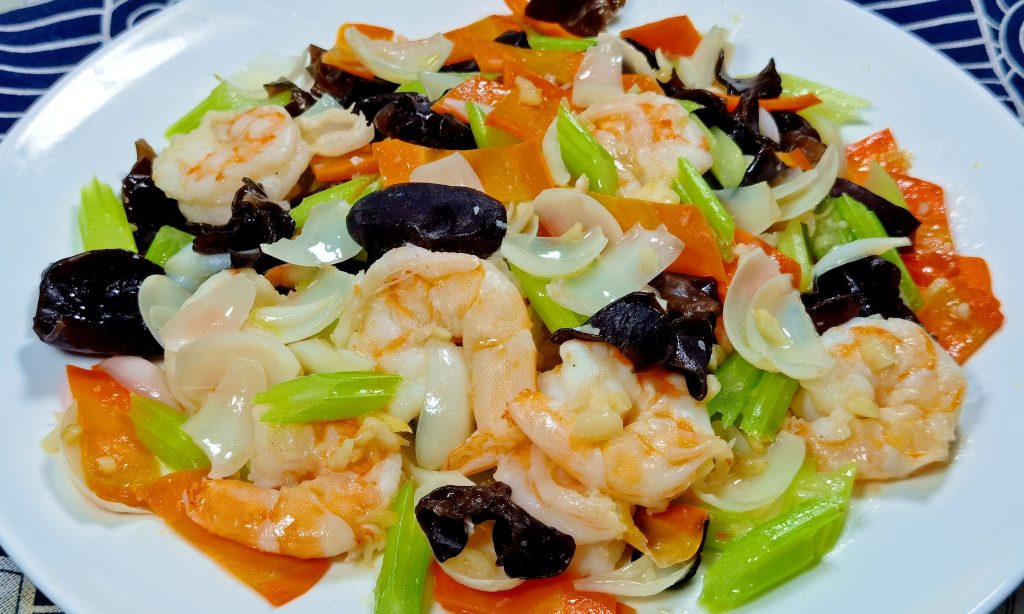This National Day holiday, no one’s stealing the spotlight quite like “Chicken Steak Bro”. Even Korean visitors are crossing borders, queuing for three hours just to bite into what netizens hail as the “ceiling of chicken steaks.” It’s a viral sensation in Jingdezhen, where stall owner Li Junyong flips golden-fried delights amid a sea of eager fans.
This chicken steak frenzy is just the tip of the iceberg for how Chinese cuisine is captivating global foodies. Since the rollout of China’s 144-hour visa-free transit policy, authentic eats have turned the country into a must-visit for international palates. Lately, that policy extended to 240 hours in late 2024, giving travelers even more time to savor the experience.

Spots like Chengdu’s spicy hotpot joints, Guangdong’s dim sum teahouses, and Beijing’s crispy Peking duck roasts have become Instagram-famous pilgrimages for foreigners. What starts as a quick photo op often spirals into days of indulgence—time flies, and the menu never ends. Some savvy visitors even loop through nearby Japan or Korea for a reset, snagging another 144-hour window to dive back in.
With online buzz pushing for longer stays, the extension to 240 hours hit just right: more room to eat, explore, and unwind without the rush.
Yet back home, the glow fades fast. After sampling Chinese cuisine’s endless variety, many foreigners face a tough “withdrawal.” Life without it feels bland—stomachs rumble for beef noodles, dreams swirl with potato cakes and spicy oil-splashed dishes, and even instant pickled cabbage ramen becomes a craving.

It’s no surprise. For those used to repetitive meals, Chinese food isn’t just sustenance; it’s a full sensory adventure—bold flavors, textures, and aromas that linger long after the last bite.
Few tourists leave China untouched by a single Chinese meal. If one doesn’t hook you, the next will. Take a Korean food blogger who once swore by fried chicken and rice cakes as the world’s pinnacle, dismissing China as a culinary void. Her trip flipped the script.
Starting at upscale spots for “proper” gourmet, she crumbled at garlic vermicelli and pickled cabbage fish, slurping every drop of that tangy broth. Then came street-level gems: scallion oil noodles and soup dumplings. One burst of savory juice from the dumpling, and she was hooked, moaning in delight. Over four whirlwind days from Dalian to Shanghai and Hangzhou, her feeds overflowed with slurps and soulful sighs.

Homebound, her beloved fried chicken and kimchi lost their shine—she dropped four pounds in four days.
Or consider a Russian brother-in-law from Sichuan, introducing his sibling to local life during summer break. Mornings meant steaming pork buns with soy milk; evenings, grilled skewers with cold drinks. The brother devoured it all, mangling Sichuan dialect to declare it “super comfy!” On departure day, a teasing “Back to your potatoes!” broke him. At the airport convenience store, he grabbed one final bun, tears welling as he bid it farewell.
This insatiable pull is common. A German engineer on his first China work trip ballooned 18 pounds in a month, unlocking a flavor universe. Now, he jostles colleagues for every Beijing assignment—once even sparring over a slot.

International students feel it deepest. A UK-based Chinese student, jet-lagged at dawn, beelined for an egg pancake stall. He inhaled four, looking disheveled; the vendor comped the last out of pity. Flip the script: Nail a few Chinese dishes, and you’re a campus king. One student’s cousin wowed peers with her five-signature recipes, earning “adopted kids” galore. Holidays? Classmates begged her return; her landlord slashed rent for kitchen access.
In contrast, Western staples often feel rigid: bread sawn like lumber, echoing on plates, scraping throats. Paired with greens, occasional beef or sashimi, it’s “plenty.” But Chinese cuisine reveals food’s true spectrum.

China’s vast landscape breeds diversity—eight major regional styles alone. Sichuan’s fiery麻辣, Cantonese’s light freshness, Suzhou’s subtle sweetness, Huaiyang’s refined elegance, Fujian’s briny depths… Sour, sweet, bitter, spicy, salty, umami, numbing, aromatic—something for every mood.
Spring in Yangzhou? Steam a cage of crab roe dumplings, pierce gently, let the essence cascade down your throat. Summer in Chengdu’s alleys? Skewer meats sizzling on grills, chase with chilled herbal jelly. Autumn in Xi’an? Slurp chewy cold noodles with fresh-baked meat sandwiches, crunching into fragrant bliss. Winter in snowy Harbin? Simmer sauerkraut noodles till bubbling, warming from within.
Even humble potatoes transform. Russians boil or fry theirs plain; in China, they star in dozens of guises. Northeast stews absorb chicken essence, bursting with savor. Sichuan shreds tangle in vinegar-chili-flower pepper fire, devouring rice bowls. Guizhou dices mingle with smoked bacon, yielding smoky chew that haunts for days.

Steaming, frying, stir-frying, braising—mastery of heat and wok hei breathes soul into Chinese dishes. Take kung pao chicken: Tender bites seared crisp outside, soft within; chilies, peanuts, and scallions bloom with fermented bean paste. Sweet-tang upfront, numbing spice follows—layers unfolding.
Western fare honors raw ingredients; Chinese cuisine elevates through technique. Every wok toss, every sauce balance crafts magic from the mundane.
Food runs deep in Chinese culture—”Food is heaven’s gift to the people.” Even crises pause for a meal; Confucius urged refinement in cuts and prep. Song-era scholars fussed over dim sum’s presentation, layering tastes and sights.
Beyond nourishment, dining fosters bonds. Western plates divide; Chinese tables unite in shared abundance. Lunar New Year reunions epitomize this—families converge around round tables, toasting unity. Solo neighbors? Pull up a chair; extra chopsticks fix it.

This harmony threads life: “Harmony breeds wealth,” “Family peace brings prosperity.” On global stages, it promotes collaboration amid differences.
Visa-free waves have shifted perceptions. Travelers rave about Chinese cuisine’s depth, streets’ order, nights’ safety, infrastructure’s edge—personal encounters often outshine headlines, fostering fresh appreciation.

From Beijing’s 2008 welcome to today’s inbound tide, it’s about bridging gaps with openness.
This piece draws on cultural observations and traveler tales for insight. It’s not exhaustive—experiences vary. Consult pros for travel plans.
References
- New Express: Transit Visa-Free Stay for Foreigners in China Extended to 240 Hours
- Baidu Encyclopedia: What Are China’s Eight Major Cuisines?
- Sohu: How to Elegantly Depict Culture and Emotion in Dining?



